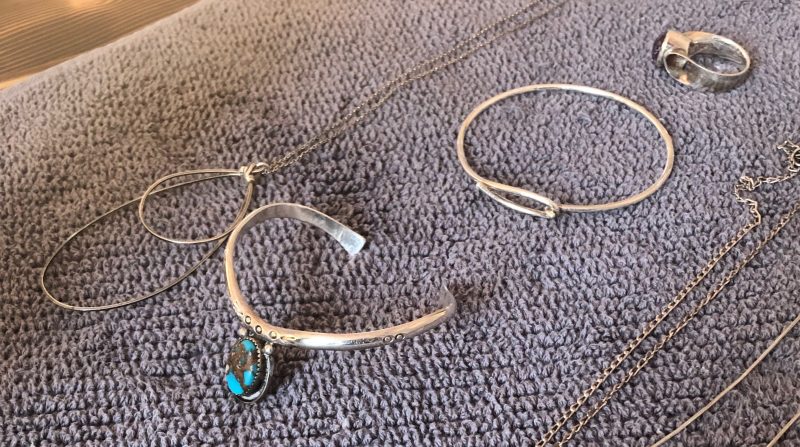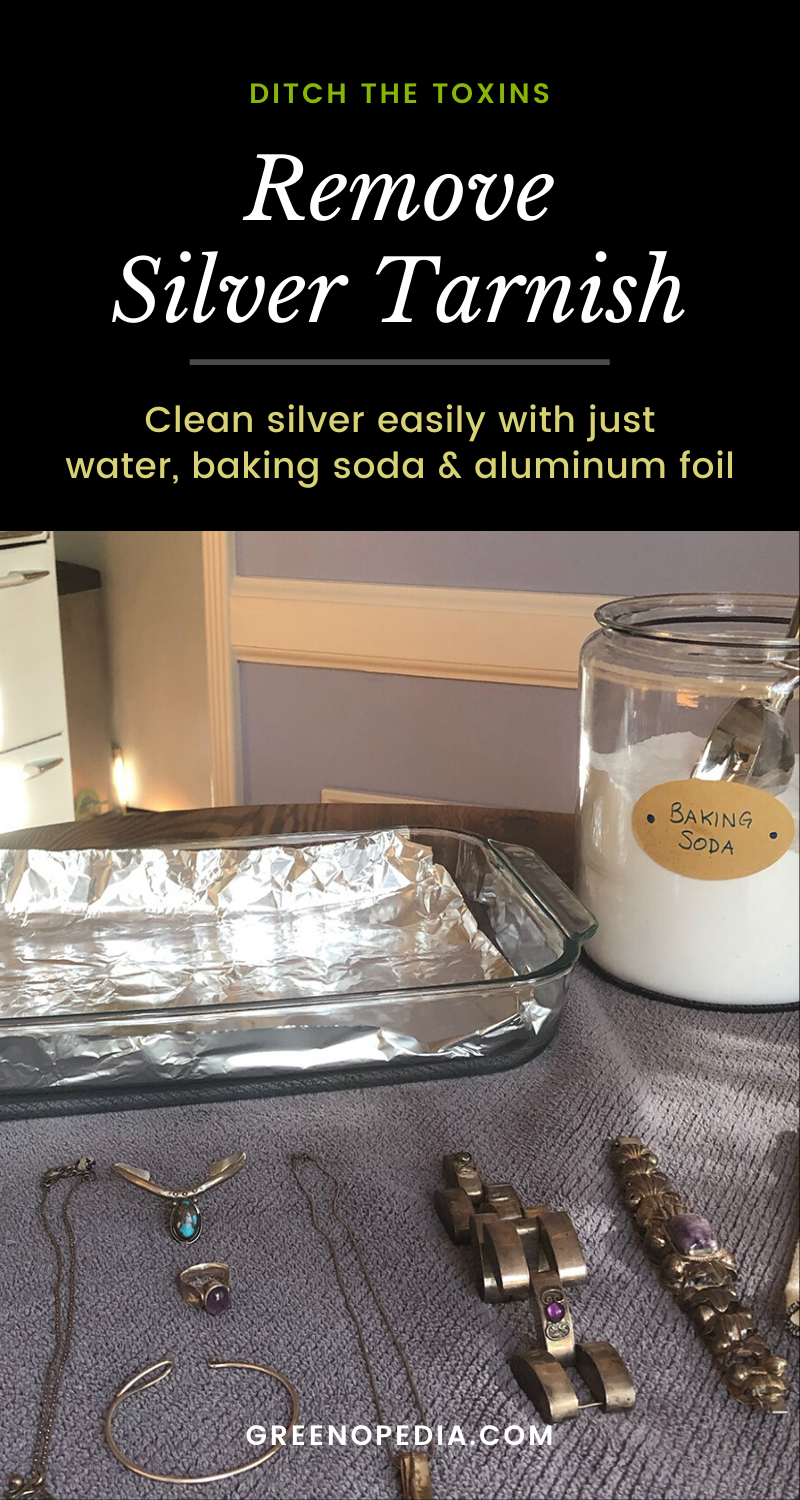When I was a kid, we would clean our grandmother’s antique water pitchers and silverware before every holiday dinner. I remember using some funky smelling cream that we’d rub on the silver until the black tarnish moved onto the cloth. We’d wash the silver before we used it, but who knows how much of the polish was left behind.
It turns out, that silver cleaner was pretty toxic and we probably shouldn’t have been using in on our silverware.
We didn’t use that same polish for our jewelry, though. We used a really strong-smelling liquid instead. You just dip the jewelry for a few seconds, pull it out, and voila! It was clean. It burned the hell out of my eyes, but that meant it was really working, right?
Actually “stealing” might be a better word than “working”. Those chemical creams and dips are not only toxic, but they’re also thieves. You think they’re doing you a favor by removing the tarnish and making your silver all shiny, but they’re really pinching some of the silver molecules while they work.
Eventually, I learned that I could clean my silverware and jewelry naturally… by essentially reversing the tarnish rather than pulling it away with the silver still attached.
Also read: Natural Cleaners are Safe, Cheap, and So Easy. Here’s How to Say Goodbye to Bleach and Ammonia.
Non-toxic silver cleaner
It’s so easy to make your own natural, non-toxic silver polish with just baking soda, water, and aluminum foil.
The simple explanation is this: Aluminum foil is immersed in a mix of baking soda and water. When the silver touches the baking soda and aluminum, a natural reaction happens… a very cool and completely safe natural reaction that transfers the tarnish — and only the tarnish — from the silver to the aluminum foil. The silver molecules remain completely intact, so your jewelry and fine dining pieces do not degrade over time.
Here’s how you do it.

Polishing silver naturally
- Line a glass baking pan with aluminum foil. You may want to lay it in the kitchen sink to avoid spills.
- Line the pan with silverware, jewelry, coins, or other silver. Make sure that each piece of silver physically touches the aluminum. That part’s important.
- Pour enough boiling water over the silver to cover it by an inch or two.
- Slowly pour in some baking soda — anywhere from a quarter cup to a full cup, depending on how big the pan is and how dirty the silver is. The ratio itself isn’t important — you’ll be able to quickly see if you need more or if, next time, you can use a bit less.
Once the mixture is added to the pan, it will begin to foam. This is normal and safe. The tarnish will rapidly begin to disappear and you may see the resulting aluminum sulfide form yellow flakes and stick to the foil.
Lightly tarnished silver will be restored in several minutes, while heavily tarnished silver may require a few treatments. Once the silver is clean, remove it from the pan, rinse it with clean water and dry with a soft cloth. Rinse the used baking soda down the drain and put the foil in the recycle bin.
I’ve heard folks say that the glue or resin that holds stones or gems in place can loosen over time — either from the hot water or the reaction. I haven’t had that happen to me yet. But do check and if you notice a stone becomes loose, you can always bring it to a jeweler to set it back in place.
FREE DOWNLOAD
Natural Living Guide
Find practical tips & natural alternatives to the everyday chemicals that invade our lives.






